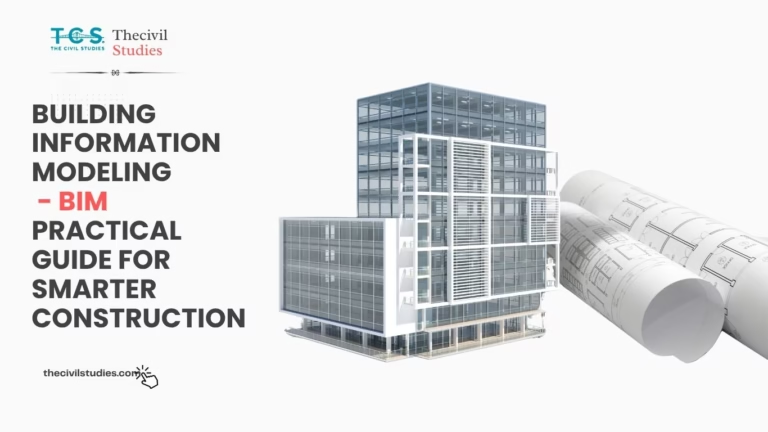As we all know in a field of construction, where towering skyscrapers kiss the sky and majestic bridges span vast chasms, one element stands out as the unsung hero – the beam. Beams are simple structural members that literally carry the weight of our architectural dreams. They are the silent sentinels who ensure that buildings and bridges do not collapse under the test of time and the relentless forces of nature.
As we understand through the above paragraph, Beam is like a diverse family member playing a unique role. in construction. In this article we will classify a beam into three different categories, each bringing its own character and capabilities, ensuring that structures are not only static, but also tailored to their specific purposes.
But wait, there is more! In our next article, we’ll unveil another fascinating category of beam that’s worth a look. So, stay tuned and click on the types below to uncover the secrets of these incredible structural elements
Common definations
Beam: – A Beam is a structural member which is subjected to transverse to its longitudinal axis, Joists: Joists are beams commonly used to support roofs in buildings.
Girder: In the context of larger beams supporting joists, they are referred to as girders.
Spandrels: Beams located at the floor level of a building that carry part of the floor load, especially those adjacent to exterior walls, are known as spandrels.
Purlins: Beams that carry the load of the roof in truss structures are called purlins.
Lintels: Lintels are beams that support the load from masonry over openings, such as doors or windows.
Girt: A girt is a horizontal beam that spans the wall columns in industrial buildings. Its purpose is to support wall coverings.
Beam Column: A beam column is a structural member that can experience bending stress when subjected to large axial compressive loads.
Classification of Beam Based on
- Types of Beams based on geometry
- Types of Beams Based on equilibrium conditions
- Types of Beams Based on support
Let us understand the first categories of types of beams
Types of Beams based on geometry
- I-Beams
- T-Beams
- L-Beams
- C-Beams
- Box Beams
- Circular Beams
1. I-Beams

I-Beams Are also called H-Beams are among the most common and versatile type of beam used in Construction. made up of a wide, flange on either side of a narrow web. The flanges are responsible for carrying most of the bending moment, while the web resists shear forces.
I Beam Design provide the good strength and stiffness to the structure, and due to this making, them ideal for supporting heavy load and longer span
Applications of I-Beam
- Skyscrapers and high-rise buildings
- Bridges
- Industrial structures
Advantages of I-Beam
- High load-bearing capacity
- Minimal deflection
- Cost-effective
2. T-Beams

T-beams are structural members or load bearing structures of a reinforced concrete wood and metal with their T-shaped cross-section, with a wide top flange and a vertical web. T- shaped Beams are suitable for the wide range of applications due to their Specific geometry which provides good resistance to bending moments and shear stresses.
Applications of T-Beam
- Flooring systems
- Roofing structures
- Bridge decks
Advantages of T-Beam
- Efficient use of materials
- Good resistance to bending
3. L-beams

L-beams, also known as angle beams, have an L-shaped cross-section. They are mainly used to provide support and stability to structures, especially at corners or junctions where two beams meet at a right angle
Applications of L- Beam
- Building corners
- Structural connections
- Frameworks
Advantages of L-Beam
- Excellent corner support
- Versatile applications
4. C- Beams

C Beams are also known as channel beams, have C- Shaped Cross-section and are often used for structural and support purposes. C Beams are allowing unique shape for efficient load distribution and makes then suitable for various framing applications.
Applications of C- Beam
- Building frames
- Bracing systems
- Conveyor systems
Advantages of C-Beam
- Lightweight
- High resistance to torsion
- Easy installation
5. Box/Rectangular Beams

Box beams, also known as hollow structural sections (HSS), have a square or rectangular cross-section. They are designed to maximize strength while minimizing weight making them a popular choice for demanding structural applications.
Applications of Box Beam
- Architectural structures
- Truss systems
- Pedestrian bridges
Advantages of Box Beam
- High strength-to-weight ratio
- Aesthetic appeal
6. Circular Beams
As the name suggests, circular beams have a circular cross-section. circular Beam shape provides a good resistance to torsion and bending making them suitable for special applications.
Applications of Circular Beam
- flag poles
- roller coaster track
- sculptural elements
Advantages of Circular Beam
- equal weight distribution
- attractive appearance





